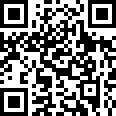
Privacy statement: Your privacy is very important to Us. Our company promises not to disclose your personal information to any external company with out your explicit permission.
Zinc-free batteries have attractive prospects due to the common raw materials and high energy density, but its biggest drawback is that it is difficult to charge the batteries. The good news is that a research team at the University of Sydney has created catalysts made up of rich elements that make zinc empty batteries rechargeable and compete with lithium batteries used on mobile devices. The energy of the zinc empty battery comes from the chemical reaction between the zinc and the air surrounding the core. In essence, the oxygen is inhaled to react with the carbon cathode to produce hydroxide, which in turn generates current due to the interaction of zinc anodes.

A researcher holds a prototype of a zinc-free rechargeable battery
Due to the use of air as a reagent, the battery can hold more zinc, thus increasing the energy density and making the battery lighter and safer. The problem is that after the zinc anode is oxidized, it will not be of much use.
Although the zinc in the battery can be completely replaced by "mechanical replacement", or rare earth minerals on the earth as a spot catalyst to reduce the oxygen at the time of discharge (and generated when charging).
The paper says Yuan Chen: “Before this time, rechargeable zinc-air batteries used expensive metal catalysts such as platinum and ruthenium oxide. By contrast, our approach has resulted in some new families of high-performance, low-cost catalysts.” .
To make this kind of electrocatalyst, the researchers produced metal oxides that do not contain the common elements such as iron, cobalt, and nickel. By carefully controlling the composition, size, and crystallinity of these metal oxides, its production method can simplify and increase the efficiency of manufacturing rechargeable zinc empty batteries.
In the test, the researchers used 120 charge-discharge cycles of the new zinc-air battery for 120 hours and found that the battery lost only less than 10% of its effectiveness. Although not as good as a lithium-ion battery, its cost should be lower and production easier.
Details of this study have been published in the recently published "Advanced Materials" journal.

October 28, 2024
September 11, 2024
October 27, 2022
September 20, 2022
July 29, 2024
July 29, 2024
この仕入先にメール
October 28, 2024
September 11, 2024
October 27, 2022
September 20, 2022
July 29, 2024
July 29, 2024

Ms. LISA CHEN
電話番号:
+86-0755-28346529
Fax:
E-mail:
モバイルサイト


Privacy statement: Your privacy is very important to Us. Our company promises not to disclose your personal information to any external company with out your explicit permission.

Fill in more information so that we can get in touch with you faster
Privacy statement: Your privacy is very important to Us. Our company promises not to disclose your personal information to any external company with out your explicit permission.